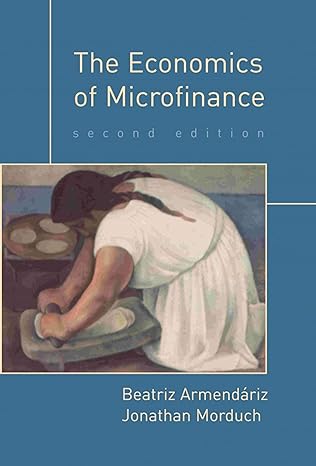Assume the following timing of events, and suppose that there are four periods-0, 1, 2, and 3.
Question:
Assume the following timing of events, and suppose that there are four periods—-0, 1, 2, and 3. At date 0, the bank lends an amount I to the borrower, and she invests the entire proceeds from her loan. At date 1, the borrower obtains a return y. If the borrower repays R1 to the bank at date 1, she will be able to access a new loan I from the bank with certainty. She will otherwise be denied access to a new loan and therefore have no access to project. Suppose that at date 2, the borrower faces exactly the same situation: If she repays and is therefore able to invest I at date 1, the borrower can obtain a return y with certainty. Otherwise she cannot have access to a new loan and therefore no access to project.
Provided she repays R2, she is again able to invest I and obtain a return y at date 3, with certainty. The gross cost of lending I for the bank is K.
Suppose I = \($100,\) y = \($300,\) K = \($120,\) and δ = 0.8, where δ is the borrower’s discount factor. Assume that the bank has a discount factor that is equal to 1; that is, assume that R1 = R2 and that the bank just wants to break even. Is the bank willing to lend to the borrower at date 1 and at date 2, and the borrower willing to repay at these two dates?
(Assume that the bank cannot verify the borrower’s returns at date 1 and 2, but he knows that they should be y.)
Step by Step Answer:

The Economics Of Microfinance
ISBN: 978-0262513982
2nd Edition
Authors: Beatriz Armendariz ,jonathan Morduch





